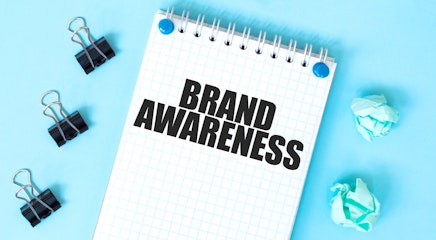Trade shows can generate many successful leads
Thanks to Google Analytics, Crazy Egg and other conversion rate optimisation tools, it’s now easy to track the profitability of your online marketing campaigns to a level that, just decades ago, was impossible for marketers.
Offline, however, things are a little different. From billboards to radio ads, working out your return on investment for many offline marketing strategies is significantly tougher than it is online.
In this guide, we’ll share four techniques that you can use to measure your return on investment at your next trade show and learn whether or not your marketing plan is successful.
Trade shows are no exception. Despite their cost, trade shows can produce a great ROI for businesses that approach them properly. All too often, however, this ROI is only really measurable months (sometimes even years) after the event is over.
Infographic: only 28% of brands are able to measure the ROI of content marketing - http://t.co/G751MJNwjk
— Raphael Love (@RaphaelLove) October 1, 2014
Clearly define your goals and success metrics before the event
Without clearly defined goals, it’s impossible to measure the return on investment your next trade show (or any form of marketing) produces. Not every business has the same goals at a trade show, and what seems like a failure for one business may actually be a significantly success according to another metric.
What’s your goal from your next trade show? Do you want to generate leads at the event to drive short-term sales? Do you want to establish your brand as a leader in your industry? Do you want to create buzz for your upcoming product launch?
All of these goals are different, and they need to be tracked differently. Plan out your goals before the event and create metrics that allow you to easily track them during and after the event to determine your ROI.
For example, if you’re exhibiting at a trade show that’s prominently covered by the media and your goal is exposure and buzz, your best metric for measuring your ROI might be press mentions or social media coverage. If you want to generate leads, the best metric for measuring your success could be total new prospects.
Every business has a different goal from a trade show, and knowing what you want to accomplish is the key to measuring your success. Define your key objectives and you’ll have no trouble determining whether or not your trade show was a success.
Record, track and monitor trade show leads using your CRM
Aside from trade shows, what other marketing techniques does your business use to generate leads and sales? In order to determine the ROI of your trade show, you will need to record and track your trade show leads based on their source.
Before the event, create naming conventions for your leads (for example, “Show X”) and record them along with the lead’s information in your CRM software. This will make it easy to measure the ROI of the trade show against other marketing tactics.
You can do this with event tags (for example, “CES 2014”) in Salesforce or with new custom lead sources for each trade show in software like Zoho CRM.
Source – http://www.shellblack.com/administration/salesforce-tags-the-good-the-bad-limitations-and-the-future/
Trade shows often produce leads that vary drastically in terms of value; some will lead to hundreds of thousands of pounds in sales over the next year, while others might produce nothing at all.
Some leads may also take several months to mature, with their value not apparent until a year or longer after the event itself. A lead that sits dormant for months after a show could suddenly become active in the future and drive serious sales.
By tagging your lead source, you’ll be able to monitor the ROI of your latest trade show in both the short term and over the next few years, giving you greater insight into the effectiveness of your marketing strategy.Trade shows often produce leads that vary drastically in terms of value; some will lead to hundreds of thousands of pounds in sales over the next year, while others might produce nothing at all.
Some leads may also take several months to mature, with their value not apparent until a year or longer after the event itself. A lead that sits dormant for months after a show could suddenly become active in the future and drive serious sales.
By tagging your lead source, you’ll be able to monitor the ROI of your latest trade show in both the short term and over the next few years, giving you greater insight into the effectiveness of your marketing strategy.
Use predictive ROI calculations to assess ROI after the event
Measuring the profitability of a trade show is often difficult due to the longer sales cycle of B2B marketing. If your leads take months to turn into sales, it can be tough to know if a trade show was a success or failure immediately afterwards.
While measuring the ROI of your latest trade show six or 12 months down the line might give you the greatest level of accuracy, it can paralyse your marketing efforts and leave your business with very little growth in the meantime.
A great way to overcome the slow development of trade show leads is by calculating the approximate ROI of your leads based on past lead value. How did your previous leads perform over the months following their acquisition?
The key to calculating your trade show ROI is knowing your metrics. Calculate your average customer value, average lead-to-sale conversion rate and other key metrics before your next trade show.
This way, you can calculate the approximate ROI of your trade show leads based on the performance of your previous leads. While this measurement is never exact, it gives you the data you need to act on your latest trade show’s results.
Remember that every trade show’s ROI will be different
It can take several months to calculate the true ROI of your latest trade show. © Depositphotos.com/Dmitriy Shironosov
While figures like average customer value or average conversion rate can be hugely useful in working out how much your trade show leads are worth, they’ll never give you an exact return on investment for your latest trade show.
Because of this, it’s important to return to your trade show leads several times after the event to track their results. Reassess your leads every month to see where they are, how much they’re worth and if any long-term progress has been made.
Every trade show is different, making the “catch all” metrics like average lead value is great for short-term analysis but poor for long-term strategy. A small business trade show, for example, won’t give you the same leads as an enterprise-focused one.
Keep track of your leads and monitor your trade show ROI on a per-show basis. As time goes on, you may discover that two seemingly identical trade shows produced a significantly different return on investment for your business.
Most trade shows occur once a year, giving you plenty of time to analyse their ROI before planning your next exhibit. Return to your results several times as time goes by to separate the top-performing trade shows from those with a weak ROI.
How profitable is your trade show marketing?
Trade shows can be massively profitable when approached with the right long-term strategy in mind. Are you measuring your trade show ROI? If so, how profitable was your last event?JTNDc2NyaXB0JTIwYXN5bmMlMjBzcmMlM0QlMjIlMkYlMkZwbGF0Zm9ybS50d2l0dGVyLmNvbSUyRndpZGdldHMuanMlMjIlMjBjaGFyc2V0JTNEJTIydXRmLTglMjIlM0UlM0MlMkZzY3JpcHQlM0U=








